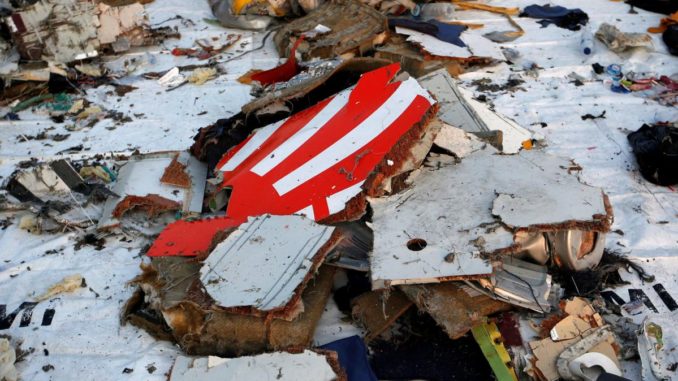
Relatives of people who died in a Boeing crash voiced anger yesterday after the aircraft maker admitted that it had known for a year that a safety circuit was not working on its new 737 Max model but had told no one.
Boeing’s statement that it had failed to alert anyone to the inoperative circuit further eroded trust in the manufacturer after the crashes of 737 Max airliners in Indonesia in October and Ethiopia in March that killed 346 people. The system alerts pilots to faulty airflow readings. An error in the so-called angle of attack data — the angle of the oncoming air — triggered events leading to the crash of the Lion Air flight in Indonesia and, it is suspected, the Ethiopian Airlines disaster on March 10.
Evi Samsul Komar, whose son and nephew were aboard the Lion Air flight, said: “That’s negligence from Boeing.” Imam Rismanto, whose brother died in the crash, said that Boeing should never have sold the plane without the safety feature and added: “They must take responsibility for these two aircraft accidents.”
Boeing is being sued for hundreds of millions of dollars in class-action law suits in Chicago, its corporate base, by relatives of victims and by shareholders who accuse the company of fraud.
The company said that it had discovered in 2017 that the “angle-of-attack disagree” alert was not functioning aboard its 737 Max series unless airline customers paid for an optional instrument. This displayed the actual angle of attack readings from two sensors that measured it outside the aircraft, not only alerting crew to faulty readings.
The angle of attack question is crucial to explaining the disasters because its readings trigger a stability system, known as the MCAS, that pushes down the nose of the aircraft if it calculates that it is approaching an aerodynamic stall. Boeing has already been criticised because it did not tell airlines and their pilots of the existence of the MCAS system until after the Indonesia crash. In both cases the MCAS overrode the pilots’ efforts to stop their aircraft diving to the ground.
It is not clear whether having the warning light would have prevented either crash but Boeing’s disclosure raises further questions about how open it has been with its regulator and airlines that bought that model.
With all its 360 737 Maxes around the world grounded, Boeing is rushing to revamp the MCAS to make it easier to control. It has, however, refused to acknowledge any flaw in the system and has said that the failure to reveal the failure of the angle of attack alert did not contribute to the crashes. “Neither the angle of attack indicator nor the [angle-of-attack] disagree alert is necessary for the safe operation of the airplane,” Boeing said. “They provide supplemental information only, and have never been considered safety features on commercial jet transport airplanes.”
Boeing briefed the Federal Aviation Administration (FAA) on the alert problem in November, after the Lion Air accident and 13 months after discovering that its software was not working as it should. Boeing attributed the error to software from an outside source. The FAA had deemed it to be low risk, its spokesman said on Sunday. “However, Boeing’s timely or earlier communication with the operators would have helped to reduce or eliminate possible confusion.”
Criminal and congressional investigators in Washington are examining the role of the FAA in certifying the 737 Max and failing to take strong action after the Lion Air disaster.
US pilots’ unions criticised Boeing. “The more and more we learn with each day, the more challenging it is to rebuild the trust,” Dennis Tajer, spokesman for the Allied Pilots Association, the house union of American Airlines crew, said. “This slow toxic drip of full disclosure only after full discovery . . . has got to stop if we are going to rebuild the trust that has been so deeply violated.”
END

Be the first to comment